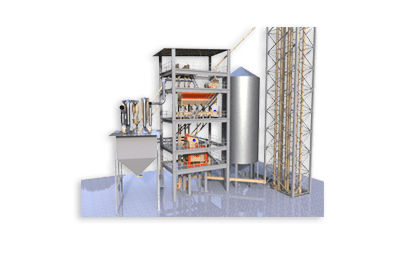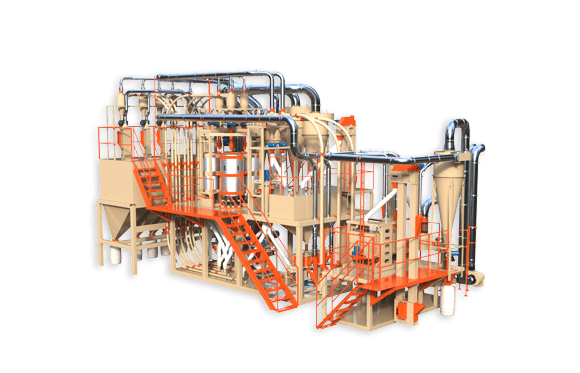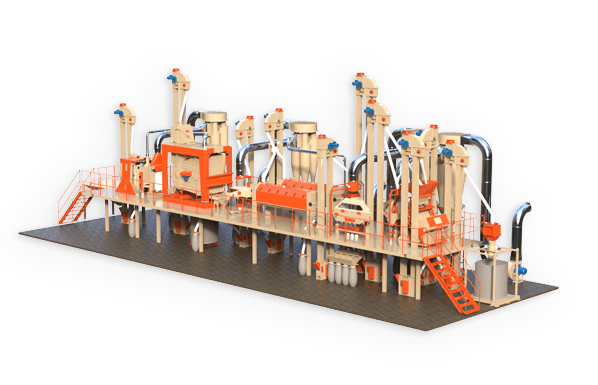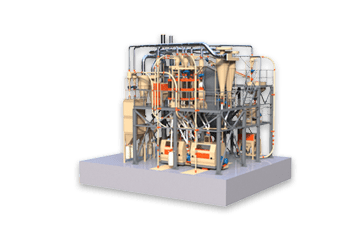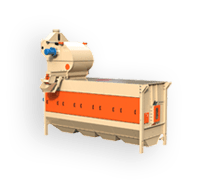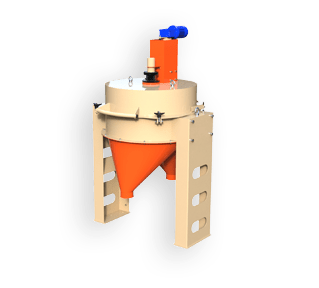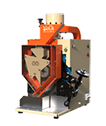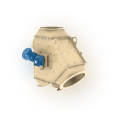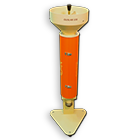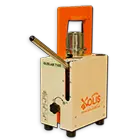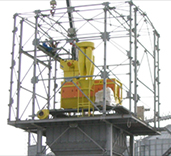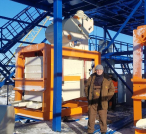Effective ways to improve the performance of low-capacity mills
Vereshchinsky A. P., Candidate of Technical Sciences
Catalog LLC “OLIS” 2005
In recent years, a significant portion of flour has been produced in low-capacity mills. These include mills with a capacity of 25 – 60 t/day. by grain, with reduced varietal grinding schemes.
The main feature of the mills of this type is the use of “short” grain grinding schemes, consisting of 8, 6 and even 4 systems. Ensuring a high yield of flour in such schemes requires the extraction of a significant amount of it in separate processes, which is achieved by maintaining low grinding modes. Such modes are usually characterized by low quality flour due to overgrinding of the grain shells, as well as the entry into it of a significant part of the impurities contained in the grain. In addition, low modes reduce to a minimum the amount of grains, and therefore higher quality flour obtained in grinding processes. It is absolutely clear that in conditions of shortage of grains, enrichment processes are not able to significantly change the overall balance of flour towards high grades and are absent in most of the schemes under consideration. Thus, the existing contradictions between the quality and yield of flour in mills of the type under consideration are insoluble within the framework of their grinding departments.An effective solution to this problem is associated with the need to significantly improve the quality of flour in flour processes and, as experience shows, is ensured by meeting higher requirements for the preparation of grain for grinding. These include not only thorough cleaning and bringing the grain into the best state for grinding through conditioning, but also ensuring a significant reduction in its ash content. The implementation of these tasks is aggravated by the specific conditions of low-capacity mills, which include limited resources, communications and working space, and therefore limited capabilities for the machine fleet used.
Analysis of the operation of low-capacity mills, both domestically built and foreign-made, shows that in reduced preparation schemes, traditionally used equipment cannot properly meet the above requirements. To solve this problem, it is necessary to develop new technological solutions and machines for their implementation. Considering the efficiency of preparing grain for grinding as the main factor in increasing the performance of low-capacity mills, our enterprise successfully implements preparation schemes containing new technological fragments implemented by specially designed machines. Such equipment is designed to process flows of 1-3 t/h and is highly efficient in reduced circuits.
The sieve-air separator is equipped with a tier of unloading sieves, which reduces the load on the underseeding sieves by 40 – 60%, increasing their efficiency. The improved design of fastening the sieve frames eliminates debris and also facilitates the replacement of sieves when they must be selected for each batch of grain. The kinematic characteristics of the separator body vibrations are close to the sieving vibrations and, together with a reliable screen cleaning system, create the best screening conditions.
The surface cleaning machine uses a whip, brush, abrasive or combination rotor, as well as screen or brush decks. A gentle or more intense effect of the given arsenal of means, together with the organization of air movement “on the result”, makes it possible to achieve the required effect in each specific case of installing such machines in a circuit.
The “Cascade-M” machine provides the possibility of deep, uniform processing of the surface of the grain without loss of endosperm, as well as the release of most of the difficult-to-separate impurities and low-value grains by destroying them.
The air separator, closed-circuit air aspirator and aspiration columns are designed for maximum visual control of pneumoseparation processes. These machines are distinguished by increased clarity of separation, which is ensured by enlarged separation zones, air uniformity and stability of grain flow within a wide range of adjustments.
Moisturizing grain in segmented “high-speed” augers using rotameters and a feeder ensures proper mixing and mutual dosage of grain and water. In most cases, due to the violation of the integrity of the shell and heating of the grain as a result of intensive surface treatment, it is possible to limit oneself to one stage of conditioning, followed by moistening and short-term cooling before the first tearing of the system. In the cold season, a good conditioning effect is achieved by heating the moistened grain in a continuous thermal bunker, under which one of the dehumidification bunkers is installed. Under such conditions, temperature and moisture gradients are simultaneously directed into the grains, increasing the rate of moisture penetration and thereby reducing the dampening time.
The use of the above means allows you to thoroughly clean the grain, reduce its initial ash content by 0.2 – 0.4%, and also make the necessary changes in the structural and mechanical properties, which allows you to extract 15 – 17% white flour already on the first torn system 56 — 58 units
Domestic mills, re-equipped in accordance with the above, as well as mills of Dutch, Danish, Turkish and other production, make it possible to produce up to 76% high-grade flour, of which 60-70% is premium flour. The payback period for re-equipment is 3 – 4 months if the mill operates around the clock.


